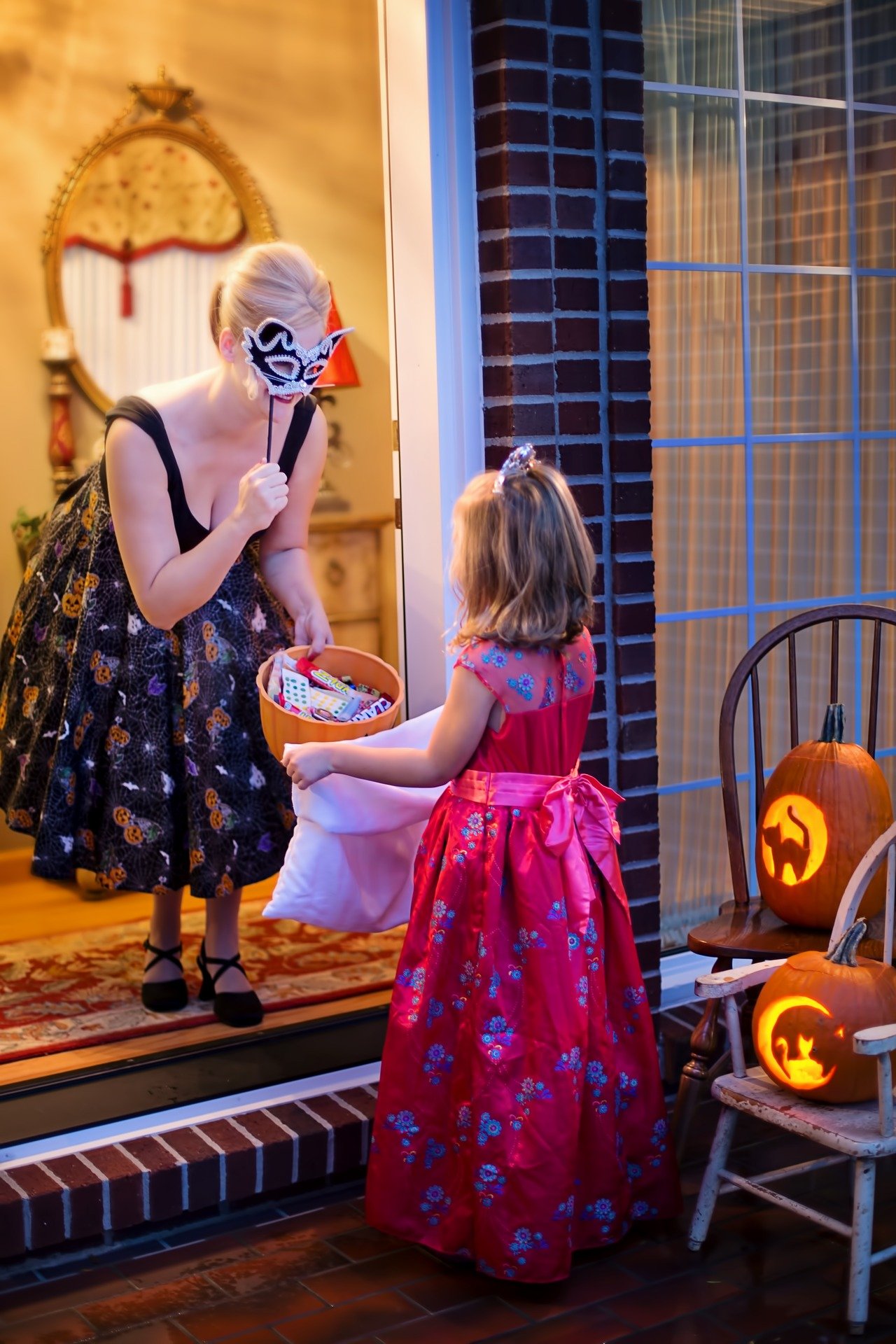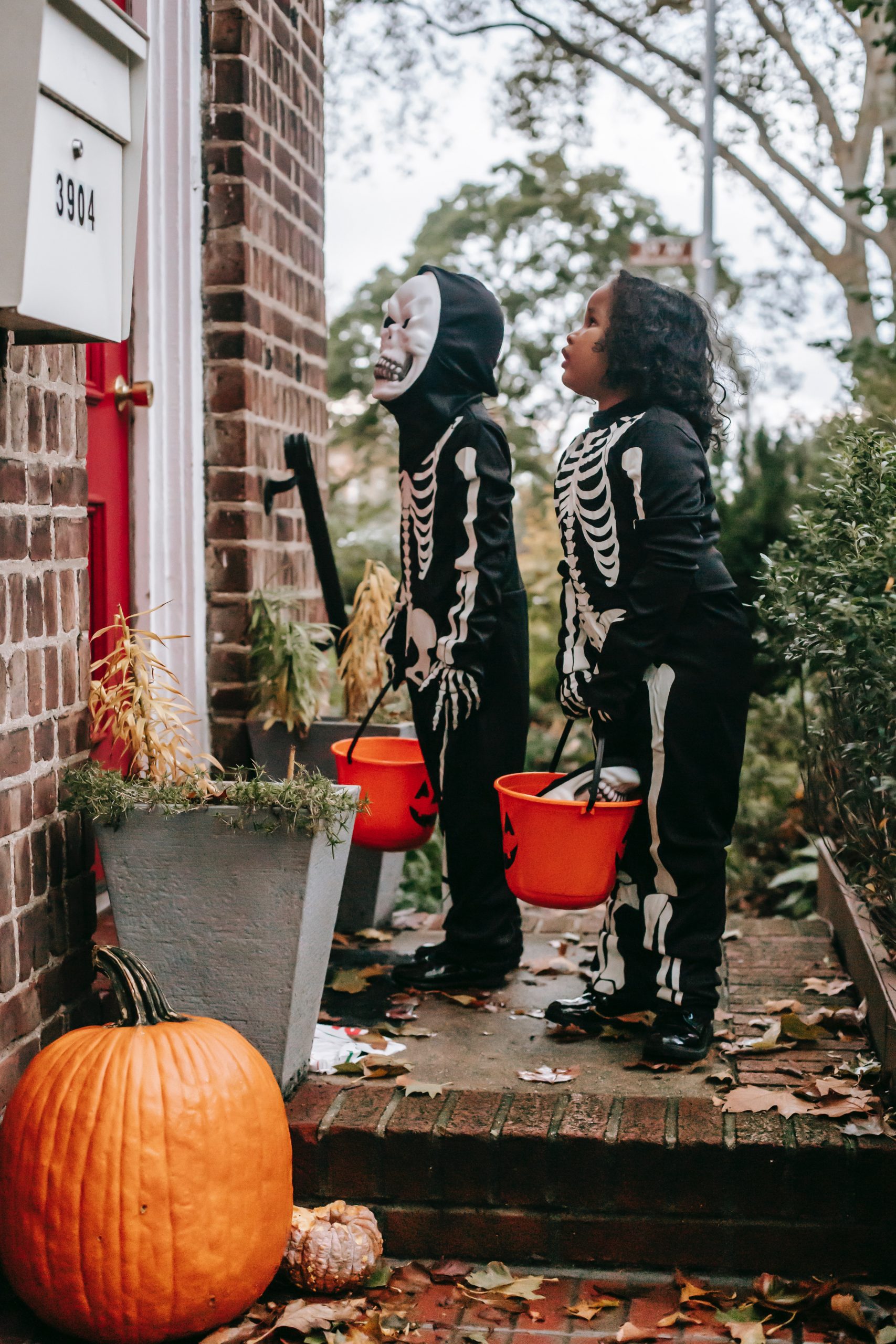Trick or treat! The only time it’s expected of you to take candy from strangers. Children everywhere are counting down the days to when they can put on that Spiderman costume, be out after dark, and stock up on sweets that won’t last the weekend. Well, maybe not all children. For some kids, the excitement of Halloween festivities can be a little overwhelming. For children with social anxieties, it can be scary to talk to strangers. For those with sensory sensitivities, the lights, noise and costumes can be a lot to deal with.
This doesn’t mean that Trick or Treating can’t be fun for everyone. With some help from our speech and occupational therapists, I’ve gathered some tips for helping your children have a fun, comfortable and safe Halloween experience.
For children with social anxieties
When you really think about it, Halloween is a very confusing holiday. When you’re little, you’re told not to talk to strangers and to definitely not take candy from them. Now suddenly people are dressing up in weird costumes and knocking on strangers’ doors. For a child who is already struggling with social situations, this can really throw them for a loop.
I asked Pam, one of our Speech-Language Pathologists, how parents can help their child prepare for this. She suggested reading books or watching videos about trick-or-treating so they know what to expect. You can even rehearse knocking on the door, saying “Trick or Treat!” and saying “thank you.”
If your child is too nervous to go door to door at strangers’ houses, try taking them to the homes of friends and family so they’re more comfortable. You can also go to community events like Trunk or Treat, which are in a more controlled environment and usually happen during the day while it’s still light out.

Image by Jill Wellington from Pixabay
For children with sensory sensitivities
With Halloween festivities come lots of noise, lights and uncomfortable costumes, which can be quite unpleasant for a child who is sensitive to those things. When out on the town, try going early to avoid crowds and avoid houses with flashing lights and scary noises.
Remember that a costume doesn’t have to be super elaborate or complicated. Dressing up is about pretending and imagination after all. Marcia, an occupational therapist here at CTC, suggests things that are easy to take off, like a cape or a simple tail. You can also go with a small prop, like a lightsaber. Pam made the great suggestion of animal pajamas or onesies, because they’re soft and warm. Avoid costumes that are too scratchy or limit movement, and refrain from masks that obscure vision. Prioritizing comfort and safety over style will make things way more enjoyable for your child.

Photo by Charles Parker from Pexels

Even a simple sheet can go a long way!
Photo by Daisy Anderson from Pexels
It’s okay to do something else!
Holidays are supposed to be fun and what that looks like can be different from person to person. There’s no law that says you have to go trick or treating. In fact, there’s a very real possibility that your child would prefer to stay home and pass out candy. Ask your child what they would like to do for Halloween this year and give them a few options. You could decorate pumpkins, make crafts together, or even let them invite a few friends over for a quiet night in with Halloween movies and treats. Pick an activity that’s going to be fun, safe and comfortable for everyone.

Photo by Julia Raasch on Unsplash
Above all, remember to have fun and be safe. Happy Halloween from all of us at CTC! 🎃


Recent Comments